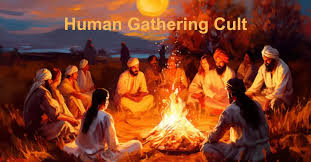The Human Gathering Cult: Unveiling the Mysteries of a Modern Phenomenon
Introduction: What Is the Human Gathering Cult?
The term “The Human Gathering Cult” evokes curiosity, mystery, and intrigue. Rooted in the tradition of collective gatherings, this modern movement has sparked widespread interest and debate. While the word “cult” often carries negative connotations, The Human Gathering Cult appears to be more of a community that thrives on shared rituals and a sense of belonging.
This phenomenon has gained traction as individuals increasingly seek meaning and connection in a fast-paced, often isolating world. With a blend of ancient rituals and contemporary ideals, the cult bridges past traditions and modern aspirations. But what exactly is it, and why is it capturing the public’s imagination? This article dives deep into the origins, beliefs, and controversies surrounding The Human Gathering Cult to understand its essence and impact.
Origins and Evolution of The Human Gathering Cult
1.1 Historical Context
The idea of collective human gatherings is as old as civilization itself. From tribal ceremonies to religious congregations, humans have always sought connection and purpose in shared experiences. Ancient practices, such as the Greek symposia or Native American powwows, laid the groundwork for modern communal movements.
These historical gatherings often served a dual purpose: fostering community ties and fulfilling spiritual or social needs. Over time, these traditions evolved into more structured movements, some of which bore the hallmarks of modern cults. The Human Gathering Cult draws from these historical roots, blending ancient wisdom with a contemporary ethos.
1.2 Emergence of the Modern Human Gathering Cult
The Human Gathering Cult emerged in the early 21st century, responding to a growing sense of disconnection in the digital age. Its founders sought to create a space where individuals could reconnect with their authentic selves and others. This movement emphasizes collective experiences over individualism, offering members a reprieve from the pressures of modern life.
While details about its exact origins remain elusive, the cult has grown steadily, attracting followers through word-of-mouth and online platforms. Its appeal lies in its promise of community, introspection, and shared purpose, resonating deeply with those seeking a deeper sense of meaning.
Beliefs, Practices, and Rituals
2.1 Core Beliefs and Philosophy
At the heart of The Human Gathering Cult is a philosophy centered on unity, self-awareness, and transformation. Members believe in the power of collective energy to foster personal growth and societal change. The cult promotes the idea that individuals are interconnected, and their actions ripple through the collective consciousness.
Spirituality plays a significant role, but the movement distances itself from traditional religious doctrines. Instead, it encourages members to explore their beliefs and contribute positively to the community. This open-ended philosophy allows the cult to attract individuals from diverse backgrounds.
2.2 Rituals and Ceremonies
The cult’s rituals are designed to strengthen bonds among members and deepen their connection to their inner selves. Ceremonies often involve group meditation, symbolic storytelling, and the sharing of personal experiences. One hallmark ritual includes the “Circle of Intentions,” where members articulate their goals and receive collective support.
These rituals typically occur in serene settings, such as forests, beaches, or dimly lit halls, fostering a sense of intimacy and spiritual immersion. The focus is not on dogma but on creating meaningful shared experiences that leave participants feeling empowered and connected.
The Influence and Controversies Surrounding the Cult
3.1 Positive Impact and Community Building
Supporters of The Human Gathering Cult highlight its ability to foster a sense of belonging and purpose. For many, joining the movement has been transformative, helping them overcome personal challenges and build lasting connections. Testimonials from members frequently emphasize the emotional and spiritual growth they’ve experienced.
The cult also contributes to community building through charitable initiatives and local outreach programs. These activities reinforce the positive aspects of the movement, showcasing its potential to inspire collective action for social good.
3.2 Criticisms and Controversial Aspects
Despite its positive impact, The Human Gathering Cult has faced criticism and scrutiny. Detractors accuse it of being overly secretive and potentially exploitative, pointing to high membership fees or the emotional pressure placed on participants.
Media portrayals often highlight these controversies, framing the cult as manipulative or overly reliant on charismatic leaders. These narratives fuel skepticism, making it difficult for outsiders to distinguish between legitimate concerns and sensationalized stories.
3.3 Legal and Ethical Challenges
The cult’s rapid growth has also led to legal and ethical challenges. Allegations of coercion, financial mismanagement, or undue influence have occasionally surfaced, prompting investigations. While no substantial evidence of wrongdoing has been proven, these controversies have cast a shadow over the movement.
Supporters argue that such challenges are inevitable for any growing organization, while critics see them as red flags. The truth likely lies somewhere in between, underscoring the complexity of movements like The Human Gathering Cult.
The Role of Technology and Social Media
4.1 Recruitment and Outreach in the Digital Age
Technology has played a pivotal role in the cult’s expansion. Social media platforms like Instagram and TikTok are used to share visually compelling content, including testimonials, event highlights, and inspirational messages. These posts often target individuals searching for meaning or community, effectively drawing them in.
Online forums and private groups provide spaces for deeper engagement, fostering a sense of exclusivity and belonging. This digital presence ensures that the cult remains accessible to a global audience, transcending geographical boundaries.
4.2 The Spread of Misinformation or Myth
However, the same technology that aids its growth also fuels misconceptions. Online detractors, former members, or skeptics often share exaggerated or false accounts, further complicating the cult’s public image. This duality highlights the challenges of navigating authenticity in a digital age.
Conclusion: Understanding the Human Gathering Cult
The Human Gathering Cult is a fascinating lens through which to explore modern human behavior, spirituality, and connection. While its origins and practices draw from ancient traditions, it reflects contemporary desires for meaning and unity in a fragmented world.
However, the movement is not without its complexities and controversies, prompting questions about its true nature and impact. Is it a force for good, fostering community and growth, or a modern-day manipulation cloaked in spirituality? The answer likely depends on individual perspectives and experiences.














Post Comment